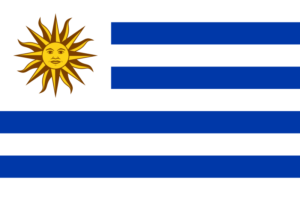Uruguay: New Regulations for Solar Housing Projects
January 23, 2015
Uruguay took the next step towards a sunny future for the country. With the approval of the new regulation for the promotion of social housing projects, which entered into force on 16 June 2014, the Uruguayan Ministry of Housing, Land Use Planning and Environment, MVOTMA, stipulated that private investors in social housing projects can only receive the tax credits offered in law no. 18.795 from August 2011 if they install pipes and structures required for setting up a solar water heater later. Since June, solar thermal systems and their pre-installation requirements have received much more attention from architects, and solar thermal specialists see increasing demand for their engineering and design solutions.
The website of the National Housing Agency, ANV, lists the attractive investment options that private investors in Uruguay’s social housing projects have. For example, income tax payments may be waived, as well as estate taxes imposed on property transfers, and construction or renovation activities may be free of VAT. Altogether, the subsidies represent an estimated 25 % reduction in the overall costs of the building. The benefits are described in Article 4 of law no. 18.795 (see the attached document).
Since June 2014, private investors in a social housing project have had to present a complete project plan for the solar thermal installation. They are required to install the relevant pipes, reserve enough unshaded space on the roof to allow the installation of the collector field and make the necessary preparations to put up storage tanks in the building. The project plan must also show the selected solar thermal components and a budget for finalising the installation.
Solar share of domestic hot water must be 50 % or higher
To get a social housing project approved, the housing developer has to show that the complete solar project is based on the ETUs (Especificaciones Técnicas Uruguayas, Uruguay’s technical specifications), which were approved in early March 2014 and came into force in May of the same year. By following the ETUs and filling in a spreadsheet called Memoria Técnica, it is possible to calculate and compare solar fractions of different projects and to check whether the designed system is going to achieve a fraction of 50 % or higher, something that is required as per the new social housing regulation from June 2014. The National Energy Administration (DNE) is responsible for implementing law no. 18.795 and Regulatory Agency for Water and Energy Services, URSEA, will decide about possible exemptions to the solar obligation.
Strong boost for solar thermal development
The Excel sheet Memoria Técnica is more than a simple registration form (see the attached XLS file). It consists of weather data, irradiation values from the major cities across the country, the number of apartments, distribution temperatures, water consumption, efficiency values of chosen equipment, number of collectors, and other, safety-relevant information. Once the sheet is properly filled in, the data will be submitted online to URSEA for approval, including the following additions: drawings of installation plan, data on shading, etc. All projects must be signed by the relevant professional to ensure the proper design.
The regulatory changes have given new impetus to further grow the solar thermal market across the country. At this early stage, however, it is impossible to say how the new regulation will shape the future of the industry.
This news was written by Eliseo Cabrera, Architect from Uruguay, (eliseocabrera@adinet.com.uy) Professor at the Faculty of Architecture at the ORT University and President of the Uruguayan Solar Chamber.
More information:


